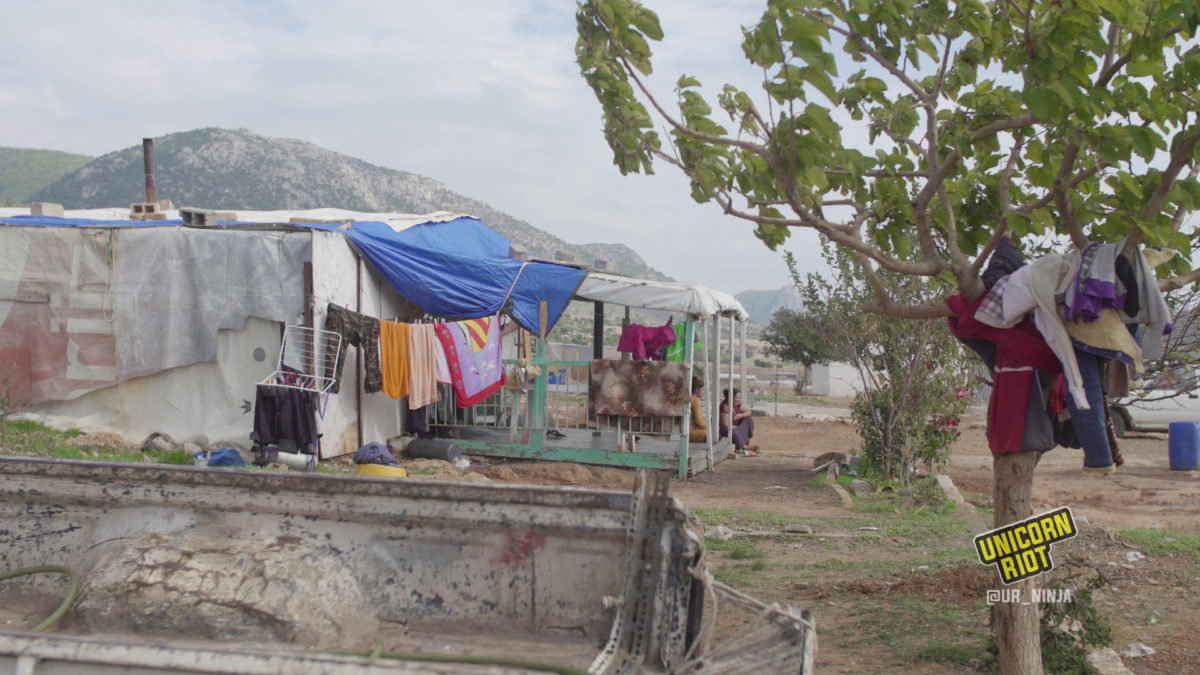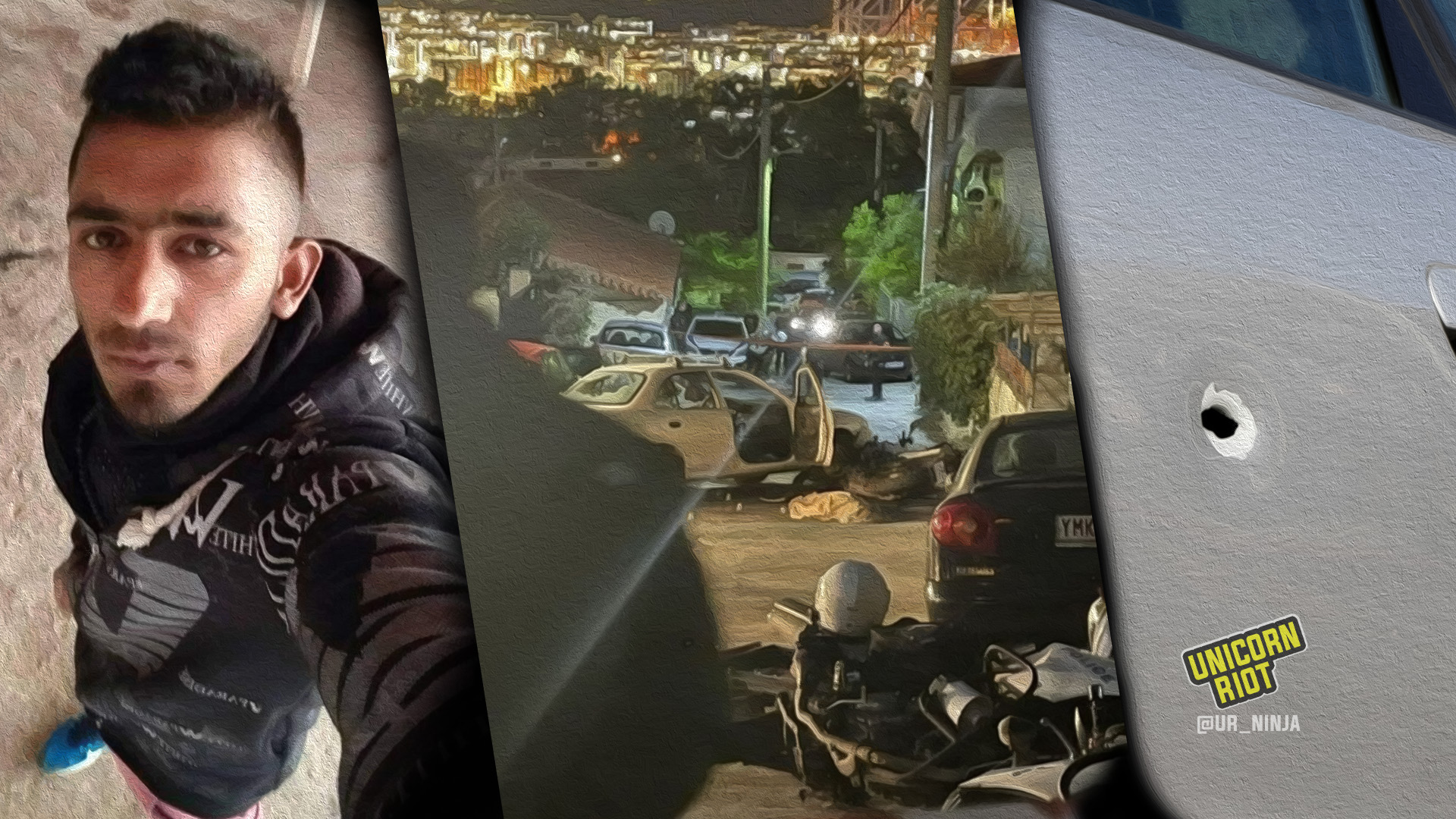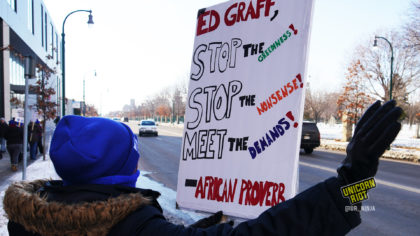Greek Police Kill Teenager as Racism, Violence Against Roma People Spikes
Xenophobia and violence against people of Roma origin is on the rise in Greece. Recent car chases and shootings by Greek police have killed one unarmed teenager and injured several others as a string of racist acts against Roma people have taken place across the country. In the first of a short series on anti-Roma racism in Greece, we feature the story of Nikos Sampanis and the rise in acts of hatred.

Nikos Sampanis: Killed by Greek Police
On October 22, 2021, news of a deadly stolen car chase was aired across the country. Broadcasters and news reports said three passengers were in the car. One died from police fire, one was injured and one escaped. The deadly incident occurred in Perama, a port-city and suburb of Athens about 30 minutes’ drive from the capitol’s center.
Reports state there was a chase of several kilometers and a possible shootout. Eight wounded policemen were allegedly forced to shoot, resulting in the death of the driver, who the reports state was a 20-year-old Greek Roma and known criminal.
[Nov. 2022] – Calls for Justice for Nikos Sampanis Renewed
Part 2 of Series [April 2022] – Roma in Greece Face a History of Exclusion, Exploitation and Racism
All initial news reports we reviewed had reproduced the police’s statement about the incident in full.
Yet, videos taken by local residents started to appear that same night and showed a different reality. In a video taken near the incident, the sound of at least 36 repeated gunshots can be heard coming from police. Instead of an exchange of gunfire, it sounded like a one-way barrage. As more evidence came to light, it became clear that the original police narrative of events differed from what actually happened.
According to released audio from the police headquarters, the pursuing officers disregarded orders to stop the vehicle pursuit and return to their positions.
At the time of the chase, cops did not know the car they were chasing was stolen but they were aware of the cultural identity of the passengers. Although testimony from police officers was that the passengers in the car had their faces covered, the police seemed to know who was in the car. “Three gypsies,” they relayed to their dispatch. This phrase revealed what many believe is the racist motive of the chase, which from the beginning was covered up by the police and their representatives.
Post-murder videos taken by residents poked holes into the police narrative and initial reports, disproving multiple claims by authorities. In one instance, police officers are heard on video relaying “there is no injured colleague,” yet a main reason for the chase was that officers were reported to have been injured by the car ramming into them.
In another instance, video examined by OmniaTV proves that police knew they were falsifying information by initially reporting that Sampanis was the driver.
The deceased was 18, not 20 years old. He had a clean criminal record and was unarmed when he was killed by Greek police. He was a passenger, not a driver, and was shot by Greek police officers in a barrage of gunfire that was not aimed at the tires of the car, but upwards with apparent murderous intent. These facts are revealed by the ballistics reports, the autopsy and the penetrating wounds to his chest and abdomen. He had two children and his wife was expecting a third. His name was Nikos Sampanis.
Victims Who Were With Sampanis Speak Out
Both of the teenagers with Sampanis when he was killed said they had their hands in the air when the police opened fire on them.
The driver, a 14-year-old who escaped from the shooting and surrendered after a few days, made statements signaling what seemed to be a murderous fury of the police. He said he drove over police motorbikes that were unoccupied and already on the ground after police started shooting. He thought he would be killed when the police opened fire, so he took his chance to run away. As he ran into a nearby alley, he heard a bullet hit the wall behind him.
“I was trying to get away to save myself and I caught two bikes from underneath (the car), but without riders. I thought at the time that they would kill me too so there would be no evidence. All the policemen were on the right side of the car and were shooting. I opened the driver’s door and hid in front of the rim where the fender is. There, just as they went to change magazines, I took my chance and left. I had time to run into the alley. Then a bullet hit a wall. Just behind me. It was meant for me, but it hit the wall because I had time to turn.”
14-year-old driver of vehicle who escaped from barrage of bullets
The third passenger, who was sitting in the back seat behind Sampanis, was a 16-year-old. He was not slightly injured as first reported in the news, but was seriously injured after being shot in the abdomen. He was saved because he went straight into surgery, according to nursing staff testimonies. He recalled being shot and said his spleen was removed.
“We were surrounded. Once we went to surrender we didn’t have time to open the door to surrender before I was shot. I said to my friends: ‘Guys, I’ve been shot.’ Then we didn’t have time to get down, [Nikos] got shot and the third guy ran and got away. ‘If I sit down too I’ll get shot. I’d better go.’ I took one bullet in the back and two in the belly. Three in total. They took out my spleen and I don’t know when I’ll get out of the hospital.”
16-year-old who was shot by Greek police and survived

Seven Officers Arrested and Charged
The seven police officers involved in the case were arrested and charged with intentional homicide with possible malice aforethought, attempted serial homicide and weapons charges. Three of the seven were hired in 2020 with a 25-day training period. Those three fired 32 bullets out of the, at least, 36 shots fired at the teens.
The officers were arrested and five days later returned to duty as normal.
The Minister of Citizen Protection, the man in charge of the police in Greece, Takis Theodorikakos, visited the policemen when they were in custody. He said of his visit, “my move was purely of a human and symbolic nature, to support young people serving in the Greek police force.” After the officers were released, he went to the media to express his satisfaction.
Greece’s minister for development and known far-rightist Adonis Georgiadis congratulated the police officers for their handling of the incident. Stavros Balaskas, the union head for the police who recently drew the ire of the populace after he voiced excuses for a man accused of killing his wife, was quick to justify the incident on the basis of hormones boiling in a chase. Greek Prime Minister Kyriakos Mitsotakis has made no statement whatsoever.
It was the fourth incident of unprovoked shootings by police officers inside the Athens metropolitan area in October 2021.
Roma Communities Protest, Roadways Paralyzed
Naturally, the efforts to cover up the murder, and the quick return of the killers to their duties, provoked a storm of reactions in Roma communities across Greece.
In many areas of central and southern Greece, Roma held protest rallies demanding justice. Because Roma camps in Greece are located on the outskirts of cities and motorways, protests often managed to paralyze several main arteries of the Greek road network. Police attacked many of these blockades while dispersing them.
The Panhellenic Confederation of Greek Roma was quick to calm the spirits, pushing that violence would not help to attain justice for the murder of Nikos, and criticizing the government and police, stressing that racism was the motive behind the shooting.
Happening during a time when social movement activity had become stagnant, the reaction by anti-fascist and anti-racist collectives to the killing was limited.
Most of the marches that took place in Athens after the Sampanis killing were heavily repressed by Greek police. On October 25, during a march near the city center, Greek authorities violently attacked the crowd, leaving dozens injured.
On the annual November 17 demonstration in Athens, nearly one month after the killing of Sampanis, his family joined the protest which featured many thousands of anarchists and anti-authoritarians.
The 2021 day of remembrance for the police killing of unarmed teenager Alexis Grigoropoulos (December 6, 2008) was also dedicated to the memory of Nikos Sampanis.

The killing of Sampanis has now taken the path of civil justice. The family has requested that investigator Chrysoula Gotovou be dropped from the case as he had worked for three years in the office of the lawyer of the police officers. This request was denied by a judge.
Furthermore, the Greek Helsinki Monitor filed a complaint of hate speech against the lawyer who’s representing the police, Alexis Kougias, for calling Roma people “a social plague.”
Recent Acts of Xenophobia and Violence Against Roma
Since the murder of Sampanis, several incidents have occurred in the country revealing the racism that Roma communities in Greece are subjected to.
In November 2021, an 8-year-old Roma girl died after being trapped in an automatic door outside of a factory in Athens. The images of the moment of her death are shocking, many say it was the indifference of workers who did not rush to help that killed the child.
On January 29, 2022, an incident almost identical to the one that took Sampanis’ life occurred when police, once again, chased a car and shot at the occupants. Happening near the city of Volos, the shooting almost claimed the life of the 15-year-old driver. The car was occupied by four other minors.
More recently on Sunday, February 13, civilians including an off-duty policeman beat to death a 44-year-old Roma man who had allegedly stolen an air conditioner in a suburb of Athens. After a few days in custody, those arrested in the beating were released with restrictions.
The latest incident committed by the collaboration of the Greek police and civil society spotlights the confluence of institutional and social racism. A confluence where police officers themselves grow up in a society where socialized racism produces an image of Roma people as criminals. And one where police and their neighbors can publicly beat a man to death over a small piece of property.
In continuing this topic, the second part features the history of exclusion and criminalization of the Roma people in the Hellenic Republic.
Cover image by Niko Georgiades for Unicorn Riot.
For more media from Greece, see our Greece archive page.
Follow us on X (aka Twitter), Facebook, YouTube, Vimeo, Instagram, Mastodon, Threads, BlueSky and Patreon.
Please consider a tax-deductible donation to help sustain our horizontally-organized, non-profit media organization:



